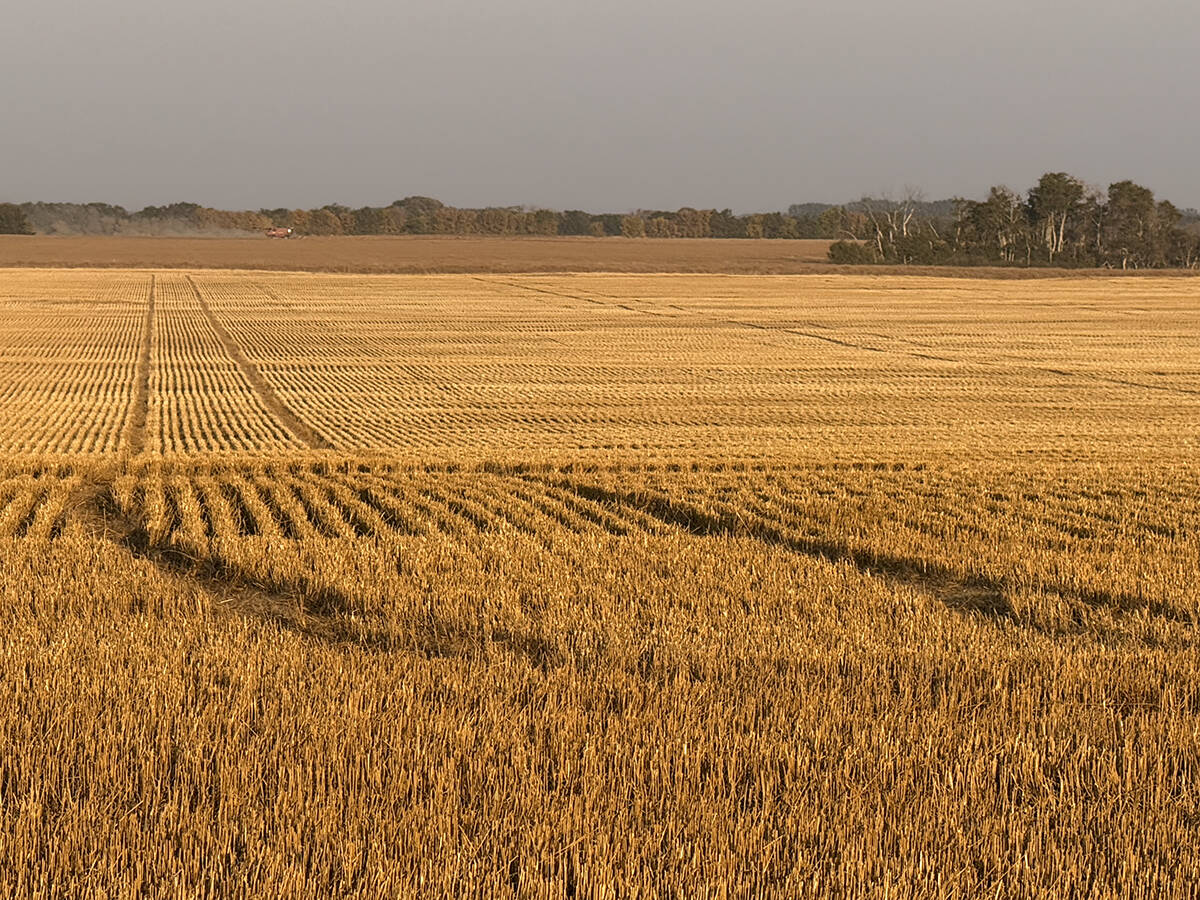Research Trends is a Western Producerstory series exploring agricultural research at the University of Saskatchewan and other publicly funded research institutions in Western Canada.
A Saskatoon research group that developed the process for converting frost-damaged canola into biodiesel has made another key discovery – this one involving the water left over from ethanol production.
Martin Reaney, an inventor and scientist from the University of Saskatchewan, says ethanol stillage water, a cheap and plentiful byproduct of the ethanol manufacturing process, contains a valued compound that could be useful in treating Alzheimer’s disease, strokes and other cognitive disorders.
Read Also

Final crop reports show strong yields, quality
Crops yielded above average across the Prairies this year, and quality is generally average to above-average.
Glyceryl phosphoryl choline (GPC) is also found in egg yolks and soy lecithin.
Reaney, along with Jianheng Shen, Yun Hua Jia, and graduate student Kornsulee Ratanapariyanuch, discovered GPC in stillage water after they took a closer look at the liquid to see if it contained valuable components.
“You can actually buy glyceryl phosphoryl choline right now, derived from soy lecithin, as a drug for boosting brain function,” Reaney said.
“But the fact that so much GPC is available in ethanol stillage is a new discovery that we’re quite excited about.
“This is a nice concentrated form of glyceryl phosphoryl choline. It’s easily purified out of ethanol stillage and in clinical trials, researchers have found interesting and positive effects on cognitive function when it is included in the diet.”
GPC concentrates could be used as a dietary supplement or as an ingredient in pharmaceutical production.
Reaney, who holds the Saskatchewan Ministry of Agriculture Chair of Lipid Quality and Utilization, said the discovery of GPC in ethanol stillage could have a significant economic impact on the Canadian ethanol industry.
In most ethanol plants, ethanol must be extracted from a liquid mixture that contains four parts stillage water and one part ethanol alcohol.
The water is usually boiled off in a costly and time consuming process.
The discovery has the potential to add significant value to stillage water and increase the profitability of grain-based ethanol production.
“We started looking at that water and trying to figure out how we could use it,” said Reaney.
“Now we’re looking at a situation where the ethanol industry could be a potential producer of an Alzheimer’s drug and the ethanol itself would become the co-product. The highest product value would actually be in the stillage water that would be left over after ethanol production.”
Identifying valuable components in industrial byproducts is a central theme of research that Reaney and his colleagues are conducting at the U of S’s College of Agriculture and Bioresources.
In many cases, emerging industries focus on manufacturing only one product. The value of byproducts or the components they contain is often unknown or unexplored.
Reaney’s research allows companies to identify and market potentially valuable but underused compounds, boost revenues and increase manufacturing efficiencies.
The research team has also determined that stillage water can be combined with canola meal, a low value byproduct of biodiesel production, to produce protein isolates. They are highly valued among feed manufacturers as an ingredient in specialized livestock rations.
Most manufacturers make protein isolates using a process that requires significant quantities of water to be mixed with low value feed stocks, such as such as canola meal.
Reaney said using stillage water to produce value-added protein isolates suggests ethanol and biodiesel plants should be located in close proximity to one another.
“We’re looking at synergies between ethanol, which is a wheat product, and canola biodiesel, which is a vegetable oil product,” Reaney said.
“The ethanol industry has water. Why not use it to extract proteins and make protein isolates from canola meal? It is not profitable to haul water or evaporate it, so the synergy between the operations is perfect”
Pilot scale tests using stillage water produced 100 percent protein isolates that were perfectly suited for production of improved livestock feed.
The isolates can be incorporated into the feed manufacturing process to ensure optimal protein-to-fibre ratios for different livestock species.
The ability to use protein and fibre varies from one livestock species to the next.
“The idea of a protein isolate is to make the most desirable ratio of protein to fibre and thereby increase the efficiency of the animal,” said Reaney.
Reaney’s team has also discovered a substitute for sodium metal catalysts.
Sodium metal is a costly and highly reactive compound that is essential to the biodiesel production process. However, it ignites and presents a significant safety risk when exposed to water.
Reaney recently identified a substitute for sodium metal catalysts that is safer to use, easier to handle and can be produced at a fraction of the cost.
The substitute contains sodium hydroxide, or lye, and glycerol, a simple sugar left over from the ethanol manufacturing process.
When combined, the two compounds crystallize and form a stable substance that performs the same function as sodium metal catalysts.
“The crystal turned out to be as good a base as the very expensive catalyst that is currently made from sodium metal,” said Reaney.
“So we were able to essentially take a co-product of ethanol production (glycerol), and an inexpensive form of alkali and remake the catalyst for biodiesel production. Essentially, this could cut the costs of catalysts required to produce biodiesel down to a quarter of what it currently costs.”
Reaney said the agriculture college’s recently opened Bioprocessing Pilot Plant has the equipment that was needed to produce the catalyst and conduct related laboratory research.
He said the new $1.5 million plant will deliver significant economic spinoffs for the province’s bioprocessing sector.
Research conducted at the facility will create new jobs, new companies and more investment. It will also attract world class researchers and innovative technologies to the province’s growing biotechnology sector.
“The multiplier for each dollar invested (in the plant) is going to be huge,” Reaney said.
“I believe we will be spawning new companies out of this facility … that will be adding hundreds of millions if not billions of dollars to the economy. These will be new Canadian technologies that are located locally to add value to existing industry.”















